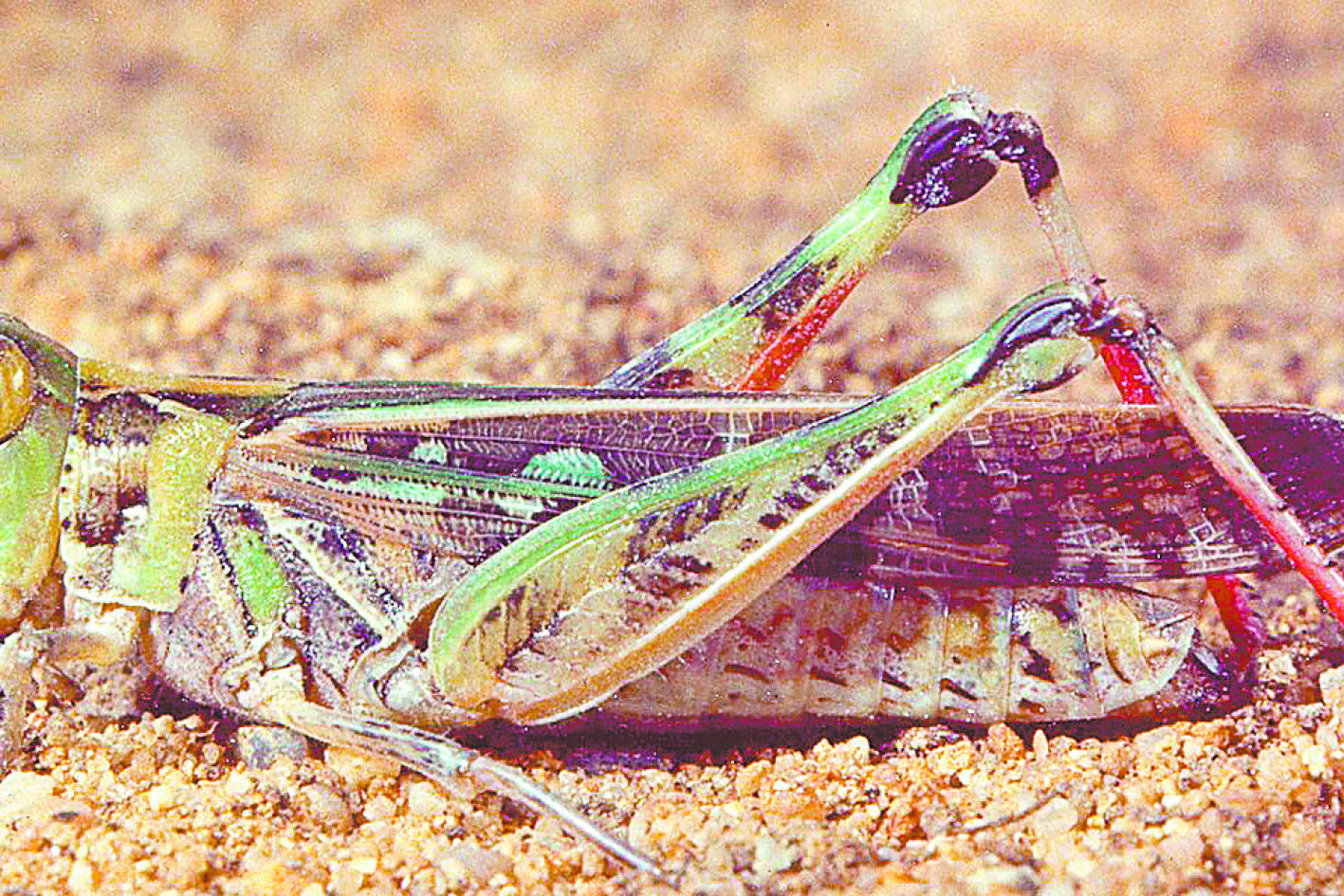Agricultural
18 April, 2024
Farmers watch out, locusts about!
Producers are being reminded on the importance of monitoring and reporting locusts, after an increase in activity recently.

Producers are being reminded on the importance of monitoring and reporting locusts, after an increase in activity recently.
Central West Local Lands Service (LLS) have received a number of reports of Australian plague locusts in the area and urged the community to be on the look-out for signs of their activity.
The Australian plague locust can be identified by the dark spots on the tips of their hind wings and distinctive red hindleg shanks.
This species is also one of three “notifiable locust species” under the Biosecurity Act 2015, which means that landholders and managers are legally-obligated to report any suspected occurrence or activity as these pest species can devastate crops and pastures, causing major environmental and agricultural damage.
Lands Service Biosecurity and Emergency Management Director, Andrew Mulligan, said that his team had received a number of reports of plague locusts in the district adding that it was vital that producers be on the lookout and report any instances of sightings.
“Local Lands Service staff can then conduct property visits or inspections, just to gain an understanding of what the locusts are up to, and then also talk about methods of control options as well,” Mr Mulligan said.
“Most importantly, we are asking landholders to remain vigilant for signs of plague locusts, and then call the LLS to report and ask for any advice and ideas for controls for this locust,” he added.
Early detection is the key for preventing widespread plague conditions, Mr Mulligan said.
“If landholders report early, we can supply them with control methods to prevent the pest from building up in high numbers so they don’t swarm and move on to other areas. The sooner we get the reports, the sooner we can prevent swarming activities,” he emphasised.
The current increase in activity is a normal occurrence for NSW, added Mr Mulligan, with the numbers at this stage not considered overly-high in regard to the amount of reports and the amount of activity.
“But like all plague locust outbreaks, it's just really important to keep an eye on the numbers building, whether you're grazing or cropping,” he added.
Mr Mulligan suggests that landholders who do notice evidence of these pests species on their land, should make note of where they are congregating and laying their eggs so that they can go back and monitor that area during spring and summer when the eggs will be hatching.
Lands Services warns that, if left unmanaged, locusts can cause major damage to vegetation, crops, pastures, home gardens, sporting fields and parks. They can also swarms over large distances, leading to large economic losses for affected landholders, land managers, the community, and regional economies.


